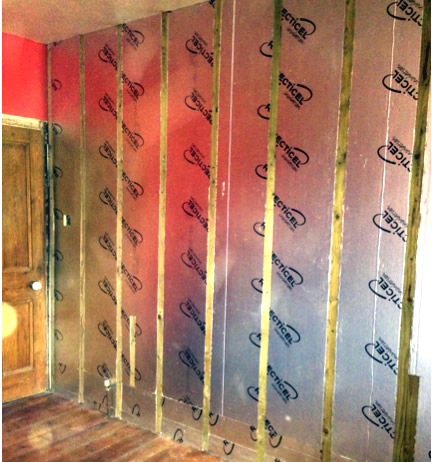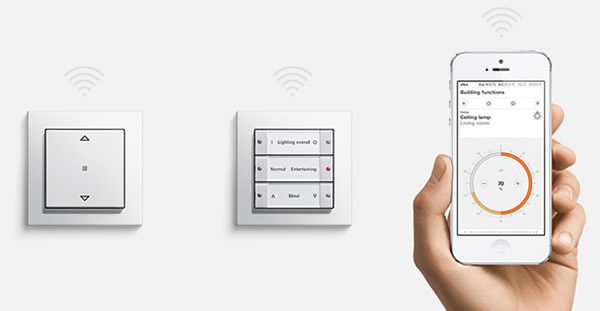 By Sophie Thomas, Ivory Egg.
By Sophie Thomas, Ivory Egg.
2014 saw a tremendous surge in innovation and interest in smart homes, mainly thanks to simple, easy-to-use wireless solutions. This has raised eyebrows within our industry as the burgeoning DIY sector starts to flex its muscles.
The conflict stems from the perceived ease of installation of some of these wireless solutions; if they are too easy to set up and install, who needs a systems integrator? Connect to Wi-Fi, download an app and you’re done – no-one wants to pay a professional for that! Naturally, these DIY offerings vary wildly in terms of functionality and usefulness, but they have made an impact nonetheless. So where does this leave the professionals? Will they start to see their business decline if this sector of the market continues to grow?
My gut instinct is no. For serious whole-home solutions, only a robust, comprehensive and open system will do – one that integrates seamlessly with all of an installation’s hardware and can guarantee a high quality of service. But let’s not rely on instinct alone. Let’s do a fair comparison of both technologies – which is something we can do with KNX, as it supports both wired and wireless connections.
Do End Users Fear Wires?
One of the reasons why the DIY wireless sector is attractive is its lack of permanence. Sadly, we live in a throw-away world, and if an end user does not like their system, or is perhaps renting their home, it is easy to remove and perhaps replace a wireless system with something else. Installing cables on the other hand, is a commitment financially as well as from a system design perspective.
End users are keen on the flexibility that wireless technology offers, but does this outweigh the security concerns? In current times, with the advent of Big Data and the IoT, having your information easily accessible by others is a major privacy and security concern. For me, from the security perspective alone, a wired solution wins out every time.

Is a Wireless Smart Home Cheaper?
Let us assume that the security issue has been solved. What about the cost? Put simply, the more products you need, including cable, the more expensive the project will be. In an existing building, adding wiring will cost more and will cause temporary disruption, whereas a wireless solution can be installed easily. Do bear in mind however, that in new-build homes, the cost of laying low-voltage cables is far less, as these can be laid at the same time as the high-voltage ones.
In the high-end sector, there is usually a trade off between cost and functionality – the more you pay, the more you get. KNX RF is still in its infancy, so it is not yet clear whether KNX RF products will be significantly more cost-effective, but costs are likely to stabilise as the market grows.

Back to Basics with Functionality, Infrastructure and Installation
Although it does add cost, creating a wired infrastructure is an investment for the future. Whilst none of us can predict what the future holds, using an open protocol such as KNX gives us the best possible start when building a sustainable smart home that will cope with the demands placed on it now and in the future. Cabling for a smart home means putting down roots. Just like adding a conservatory or renovating and refurbishing. Providing the infrastructure for a smart home adds value to a property.
A wired KNX solution is stable; fixed but with the option to expand provided the correct infrastructure is in place, which means that the solution and system design must be agreed upon at an early stage. Laying cable takes time, and making last-minute changes is costly and sometimes impractical.
The advantage of using wireless is that any additions do not require the same amount of forethought. Switch positions can be changed more easily as they are not hard-wired, or if things have been forgotten, they can be added without major practical design changes. The installation process is also easier and quicker – a bonus for any installer looking to make a profit.
One of the major drawbacks with wireless is interference. RF signals can be interrupted by microwaves and damp walls, and with most modern homes in the UK for example, being built using foil-backed plasterboard, RF has its work cut out.

As touched upon earlier, if homeowners want the full package, wireless products may not provide the functionality that a wired solution does. Wireless signal range is also a potential issue, as well as the powering of transmitters and receivers. Homeowners expect their smart home system to work consistently, not intermittently, so if a wireless solution is used, the design must ensure sufficient coverage and the user must be made aware of the battery life of wireless devices.
Wired vs. Wireless – a design decision?
Anyone choosing to create a smart home will have some design decisions to make. With KNX being an open world standard that has over 400 manufacturers offering compliant products, end users are spoilt for choice when it comes to wired switch plates. Does choosing wireless over wired mean a compromise on design? Currently I think it does, although there are some exceptions, and as the RF world continues to expand, manufacturers will feel the need to offer more attractive options.

Conclusion
For me, a wired solution will always be the preferred choice for the smart home. We cannot hope for a smart future if we do not think smart and plan for generations ahead with a solid infrastructure that is built to last. Relying solely on wireless to solve our infrastructure needs may be the easy option, but is it the best solution for our customers who expect supreme quality at all times?
We are in a difficult position however. As mentioned at the Smart Building Conference in October 2014 in London, 80% of our building stock for the 2020 target is already built. How much of this is ready for the smart home generation? Not nearly enough, so thank goodness wireless technology is there to help us bridge the gap.
Sophie Thomas is the Marketing and Events Manager at Ivory Egg (UK) Ltd, a supplier of leading KNX products and provider of KNX training courses.
You are welcome to comment on this article below.












